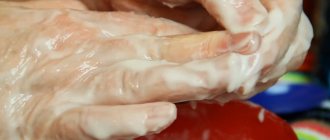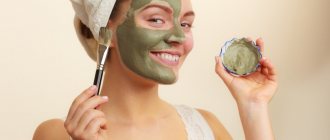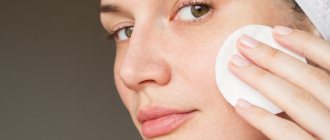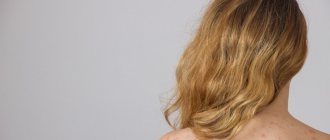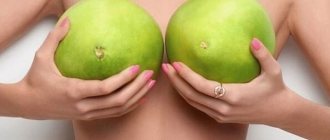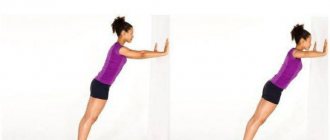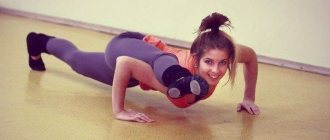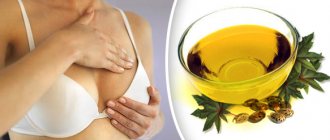Regular home care
It is known that the skin of the neck and décolleté ages faster than other areas of the body.
“Therefore, you need to take care of her regularly and carefully,” says Rano Azimova. “In addition, it is not so easy to combat the signs of wilting in this area with the help of cosmetic procedures. It is better to delay the appearance of age-related changes by keeping the skin of the chest and neck in good condition for as long as possible. To cleanse twice a day, use not a body product (soap or gel) but what you wash with - gel, foam or face cream. Then apply cream to the skin of your chest and neck to deeply moisturize and nourish. Use light textures in the morning, thicker and oilier ones in the evening. Choose care products depending on the time of year: lighter ones for spring and summer, rich and dense ones for autumn and winter. Apply the cream to the skin from bottom to top.” It is advisable to include procedures such as peeling and masks into a regular neck and décolleté area care program. They are easy to make yourself.
Delicate peeling for neck and décolleté
Mix 1-2 tbsp. l. sour cream, 1 tsp. sugar, 2 tsp oil (olive, almond, sesame). Apply the resulting mixture to damp skin. Massage in circular motions, then rinse with cool water.
Lifting mask for the décolleté area
Mix 1-2 tbsp. bran, 2 tsp oil (olive, almond, sea buckthorn), 1/2 tsp. black pepper. Apply the resulting mixture to clean skin of the décolleté area. Leave for 15-20 minutes. Then rinse off first with warm and then cool water.
Warm nourishing mask for breasts
Boil 1 potato, mash. Mix with 2 tbsp. olive oil, 1 tsp. cream, 1 tsp. liquid honey. Apply the resulting mass to clean breast skin. After 20 minutes, rinse with warm water.
Oil and contrast compresses also have excellent nourishing and rejuvenating effects .
In the photo: Rano Azimova, Ph.D. plastic surgeon, oncologist-mammologist.
Features of care by age
When taking care of your own décolleté, you must take age into account. This is explained by the fact that every year the skin ages, so a different approach to it is needed.
At the age of 20, the withering processes do not make themselves felt, so it is better to pay attention to cleansing and moisturizing. The ideal choice would be milk or cream fluid with a light texture.
At the age of about 40 years, a decrease in the synthesis of elastin and collagen begins to manifest itself. As a result, the first signs of sagging skin appear. Moreover, after waking up, folds often appear on the side. In this case, you should use a cream with a modeling lifting effect. It must contain hyaluronic acid, vitamin C and peptides.
It becomes more difficult for women over 50 years of age, as menopause is added to the previous problems. As a result of hormone imbalance, the skin becomes more flabby, thinner and dryer. At this age, experts recommend using special products designed for menopause. There must be such a mark on the label. The cost of such products will not be too high, but the effect will become noticeable quite quickly.
Professional treatments
It is advisable to supplement home care with professional care. “I recommend alternating procedures such as mesotherapy and biorevitalization , which saturate the skin with hyaluronic acid,” says our expert. “They are aimed at stimulating metabolism, accelerating regeneration and normalizing blood flow. Massage will help maintain muscle tone in this area.”
Hygiene during breastfeeding
Neonatologists and breastfeeding specialists advise against washing your breasts with soap before each feeding.
This will dry out the skin, cause cracks and make feeding an unpleasant experience. It will be enough to take a shower and change your underwear every day. Washing your breasts too often leads to disruption of the microflora in the area around the nipple, which can trigger inflammatory processes. Use pH-neutral liquid soap for breast hygiene. After a shower, do not rub your breasts with a towel, as this will injure your nipples. Instead, blot it with a clean, soft cloth. If there are no cracks or injuries, treating the nipples with disinfectant solutions is not necessary. Such products dry out the skin, eliminate its natural smell and taste, and this is very important for the baby. Foreign odors make the baby worry, and he may refuse to breastfeed. Before feeding, be sure to wash your hands with soap and then express a few drops of milk to remove any pathogens that may have gotten in from your clothing.
How to Simply Recommend
Why the medicine does not work The key to successful treatment is, of course, following all the doctor’s recommendations and informing him of all significant changes during therapy. However, a specialist can talk as much as he wants about the regimen and duration of taking the drug, but most patients will still violate these rules. Read more
Do not wash away any milk remaining on your nipples after feeding. As it dries, it will be absorbed into the skin, moisturizing it and preventing cracking. During lactation, wear special bras that do not squeeze or press against enlarged breasts. You can put special pads in this linen that collect leaking milk and prevent your clothes from getting dirty. It is recommended to wear nursing clothing that allows easy access to the breasts.
Sun protection
We have already told you more than once about the harmful effects the sun has on the skin. “Women often apply creams with high SPF only to the face, while the neck and chest area in spring and summer needs protection no less,” says Rano Azimova. “Don’t forget that if you neglect sunscreen, you risk getting skin cancer.” Learn how to choose and use such cosmetics correctly.
Breast skin care
Caring for the skin of the chest or décolleté is no less important than caring for the skin of the face. In general, I like to say that a woman’s face begins from the edge of the hair growth on her head to the areola area

